The Curse of Oak Island- Season 5, Episode 9: The French Connection
The following is a Plot Summary and Analysis of Season 5, Episode 9 of the History Channel’s TV series The Curse of Oak Island.
.
.
[SPOILER ALERT!!!]
.
.
Plot Summary
Dave Blankenship and Jack Begley meet with Vanessa Lucido of ROC Equipment at the now-embryonic H8 Shaft, which has been sunk to a depth of 10 feet. The narrator reveals that Irving Equipment Ltd. expects to complete the shaft within four days.
Meanwhile, Rick Lagina, Alex Lagina, and Peter Fornetti travel to Paris, France. There, the three treasure hunters meet with French researcher and translator Nichola Lewis, who has agreed to take them to Sonia Matossian, a member of the La Rochefoucauld family and the current owner of Chateau de La Rochefoucaul (first mentioned in the previous episode). Lewis and the treasure hunters board a train bound for Charente, the department of Southwestern France in which the castle is located.
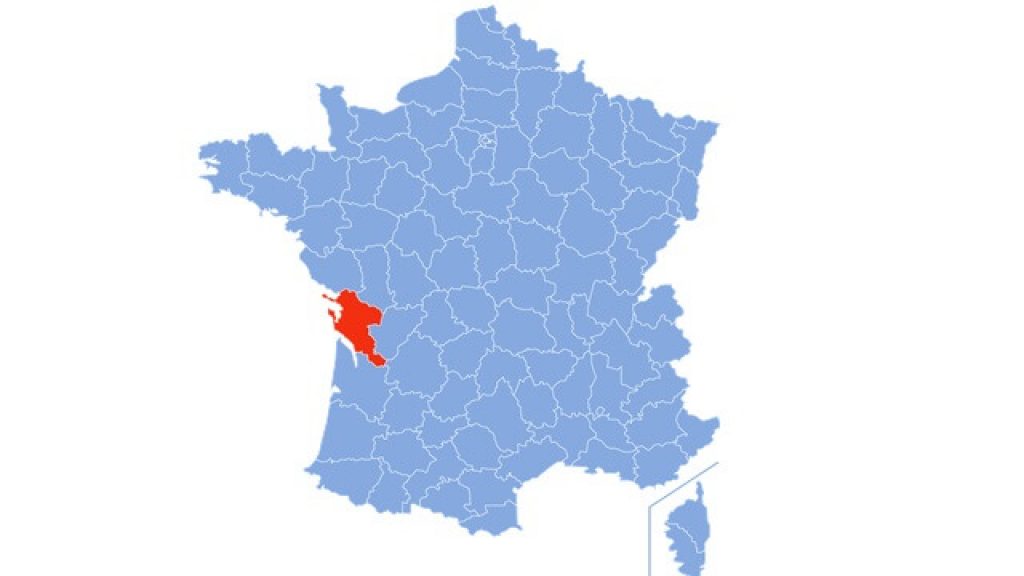
On the way to Charente, Lewis describes the Chateau de La Rochefoucauld to her American charges, telling them about chambers and tunnels beneath the castle which boast remarkable carvings. When Alex Lagina expresses a desire to find “a more solid connection between the Templars and Oak Island” at the chateau, Lewis reveals that she may have made such a connection already. She proceeds to tell the treasure hunters about two Templar chapels located in Charente, inside one of which hangs a painting depicting a mounted, battle-ready Templar knight with a particular symbol painted on his shield. Lewis points out that this symbol on the knight’s shield- a cross with a dot in each quadrant- is the same symbol inscribed on Oak Island’s famous H/O stone.
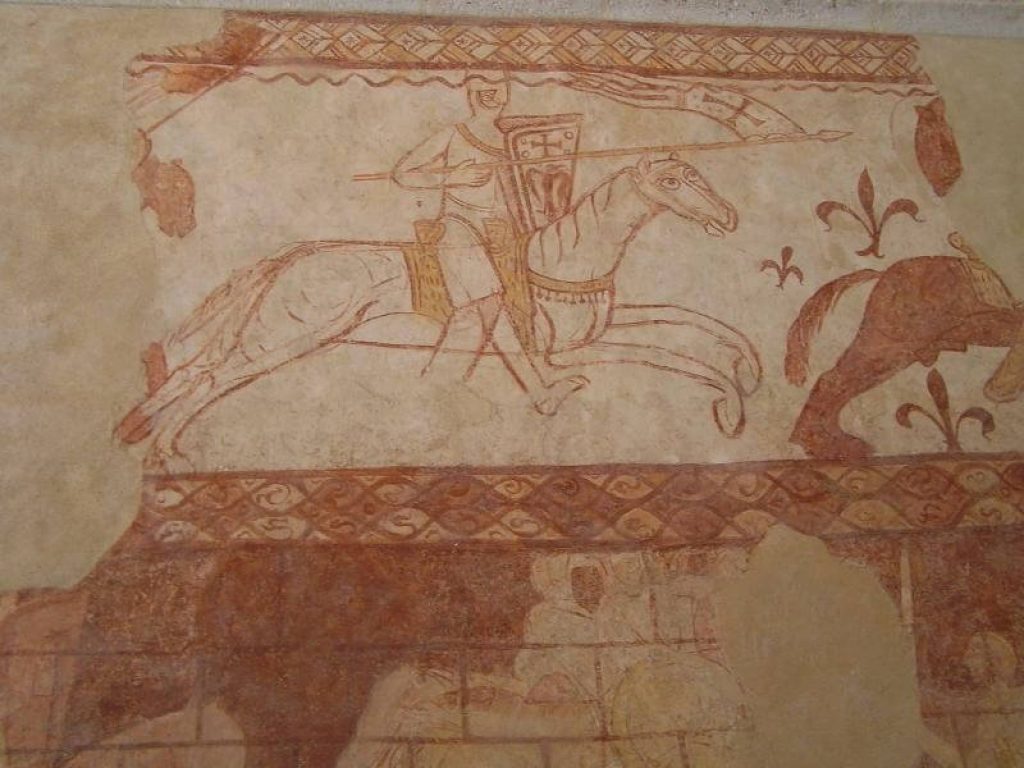
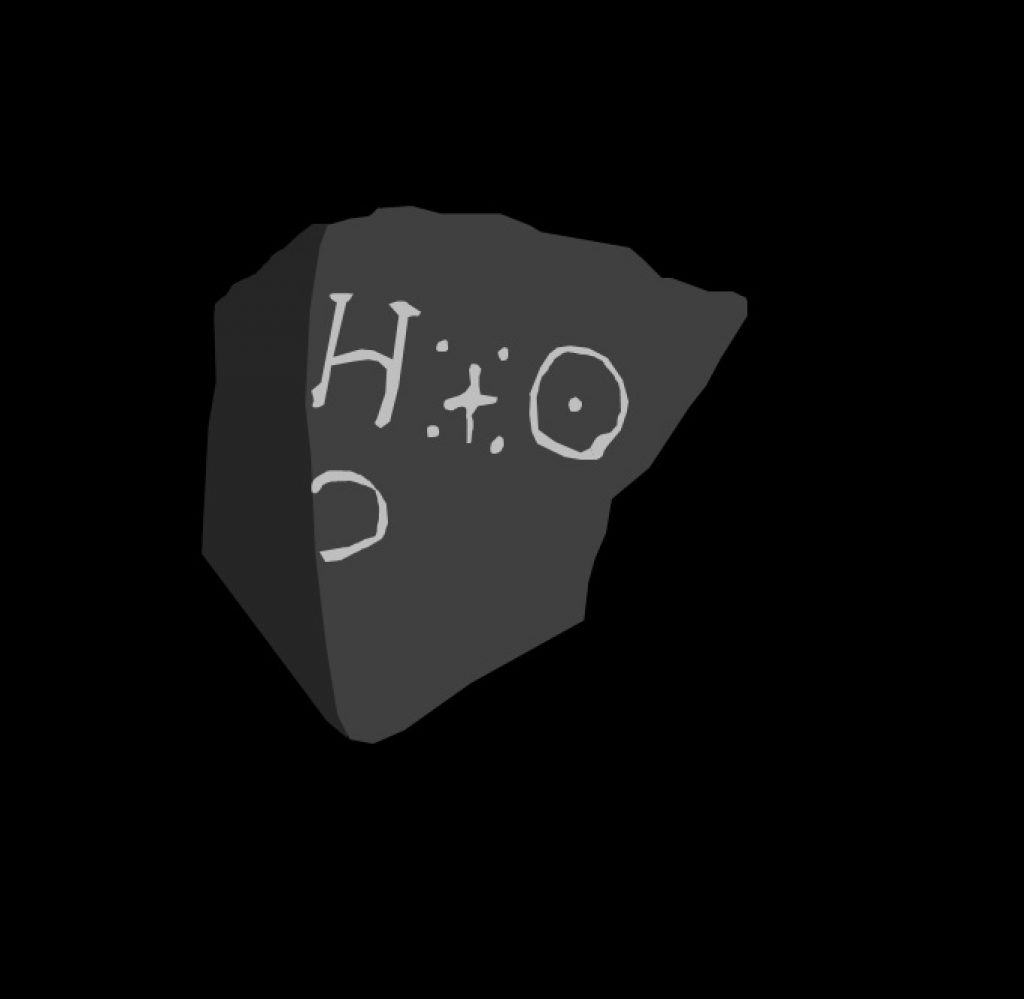
She goes on to address the other two symbols which flank the cross, namely the ‘H’ and ‘O’ of the H/O stone, and suggests that they represent the Greek letters eta and theta, respectively. Lewis theorizes that together, the three symbols form a Christogram, an abbreviation for the name of Jesus Christ, which, the narrator informs us, were “commonly used in the Byzantine and Medieval eras.” Specifically, Lewis hypothesizes that the ‘O’ on the H/O stone is a one-letter abbreviation for Theos, the Greek word for God.
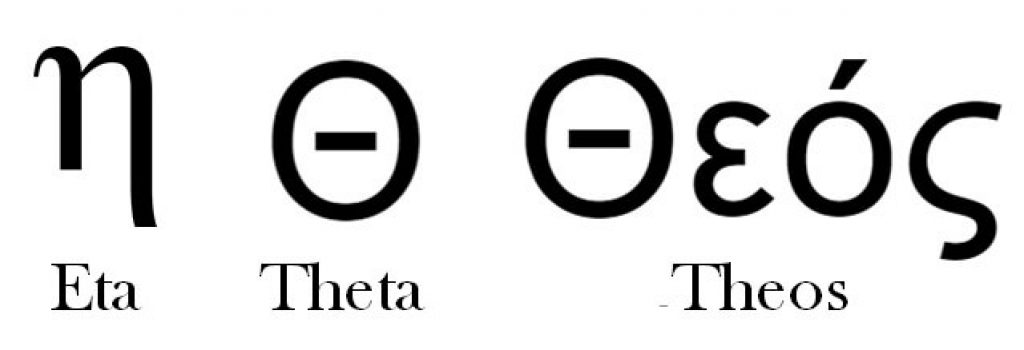
Back on Oak Island, Marty Lagina, Dave Blankenship, Gary Drayton, and archaeologist Laird Niven head to a shallow pit on Oak Island’s Lot 24 in which a tree was once rooted. The Oak Island crew had first started excavating this pit in Season 5, Episode 3. only to abandon the project shortly thereafter when Niven decided that some of the stones they uncovered might be culturally significant. The team, having since secured a digging permit for the site, proceeds to excavate the area in a manner prescribed by the archaeologist.
Meanwhile, in France, Lewis and the three Laginas arrive at Chateau de La Rochefoucauld, where they are greeted by Sonia Matossian. After inviting her guests inside, Matossian informs them that the castle was built on a rock, and has no artificial foundation. “That’s where our name comes from,” she says. “Foucauld’s Rock. La Roche Foucauld.”
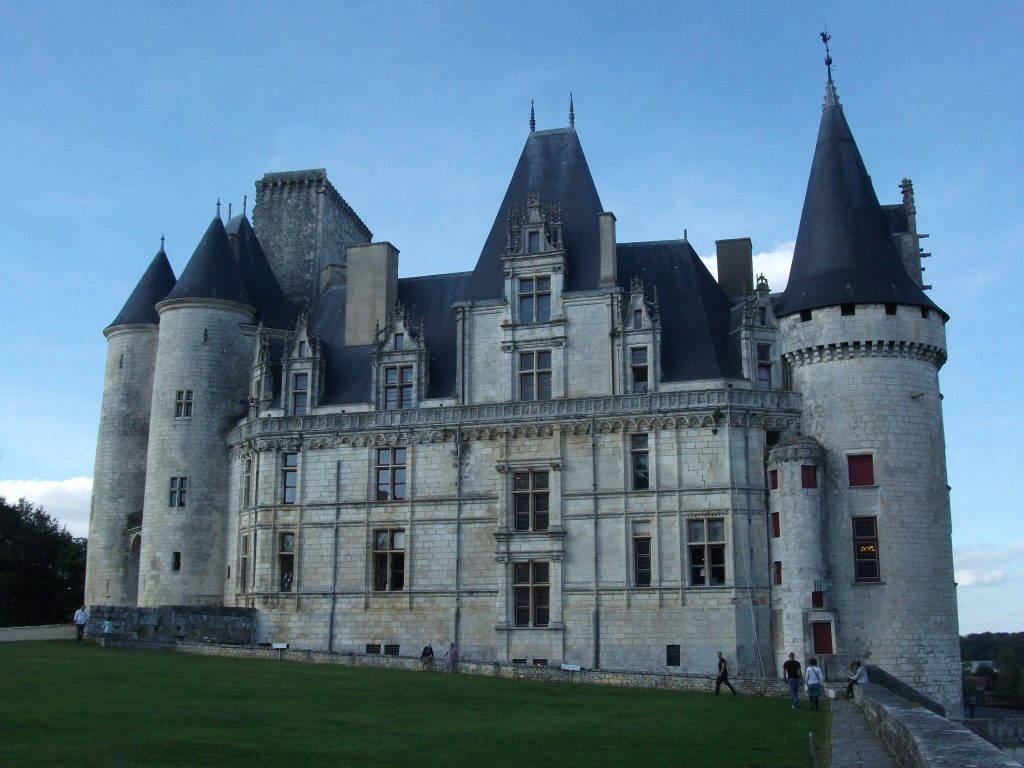
The narrator then informs us of the castle’s history, saying: “Chateau de La Rochefoucauld began as a large wooden fortification built in the year 980 as a means of protecting its inhabitants from Viking invaders. Over the next 500 years, it would continue to grow in size, and is now considered one of the greatest achievements of the French Renaissance.”
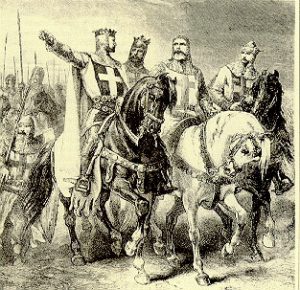 Later, Rick Lagina presents Sonia Matossian with one of Zena Halpern’s maps, in the top right-hand corner of which are written the words, “Cette dessun pour M. Francois de Rochefaucauld, un petite verre d’appre Neustria,” roughly translated as, “This drawing for M. Francois Rochfoucauld, a little drink learned from Neustria.” After Matossian states that the map obviously has a connection with the La Rochefoucauld family, Rick asks her if her family had any connections with the Knights Templar. “I’ve never heard of Templars in the family,” she replies. “Doesn’t mean that there weren’t any… I have heard of the Crusades. They all went to the Crusades.” Matossian goes on to suggest that it was entirely possible that her La Rochefoucauld ancestors met Templar knights in the Holy Land. The narrator expands on that notion by suggesting that members of the Knights Templar might have entrusted the secret location of their fabled treasure to members of the La Rochefoucauld family.
Later, Rick Lagina presents Sonia Matossian with one of Zena Halpern’s maps, in the top right-hand corner of which are written the words, “Cette dessun pour M. Francois de Rochefaucauld, un petite verre d’appre Neustria,” roughly translated as, “This drawing for M. Francois Rochfoucauld, a little drink learned from Neustria.” After Matossian states that the map obviously has a connection with the La Rochefoucauld family, Rick asks her if her family had any connections with the Knights Templar. “I’ve never heard of Templars in the family,” she replies. “Doesn’t mean that there weren’t any… I have heard of the Crusades. They all went to the Crusades.” Matossian goes on to suggest that it was entirely possible that her La Rochefoucauld ancestors met Templar knights in the Holy Land. The narrator expands on that notion by suggesting that members of the Knights Templar might have entrusted the secret location of their fabled treasure to members of the La Rochefoucauld family.
When prompted by Rick, Matossian opines that the strange form of French in which the map’s notes and labels were written is a slang dialect unique to the author’s home region, indicating that the author was a commoner who spoke some variety of Old French. “The nobility,” on the other hand, she says, “knew how to speak French perfectly.” Matossian scrutinizes the map more closely, and suggests that the aforementioned passage scrawled on Halpern’s map was translated incorrectly, and actually means, “This sketch for Mr. La Rochefoucauld, a little towards the west.”
Following that revelation, Matossian encourages her guests to pay a visit to ‘Foucauld’s Rock’ beneath the castle, entrusting Rick with the keys to the place.
Back on Oak Island, Marty Lagina, Dave Blankenship, Gary Drayton, and Laird Niven continue to excavate the site at Lot 22. Bit by bit, Niven brushes debris away from the stones beneath, hoping to uncover in intact structure, while Marty and Gary sift through the debris that he has removed. When questioned by Marty, Niven speculates that the stones he is uncovering might comprise the floor of a house.
Soon afterwards, Drayon discovers a small piece of pottery in the spoils which Niven believes might be a fragment of Staffordshire slipware, a type of English pottery fashionable from the mid 1700’s until the 1770’s.
The narrator reveals in an aside that the potential foundation proved to be too small to be that of a house, suggesting that it might have served as a base for a smaller structure like a lookout post.
Back in France, beneath the Chateau de La Rochefoucauld, Rick Lagina, Alex Lagina, Peter Fornetti, and Nichola Lewis explore the caves and tunnels within Foucauld’s Rock which, the narrator explains, owes its name to a man named Fucaldus who first employed the landmark as a building site in 980 A.D. Unfortunately, the explorers are unable to find any carvings within the labyrinth, Templar or otherwise. When they return to the surface and relate their experience to their host, Sonia Matossian informs them that most of the carvings that the caves once boasted likely faded into obscurity due to the degenerative effects of a river which local tanners diverted beneath the castle in the 18th Century. With that, the treasure hunters thank Matossian for all her help and take their leave of Chateau de La Rochefoucauld.
The following day, Rick, Alex, and Peter head southeast to the village of Domme, France, where they meet with Templar expert Jerry Glover. Glover takes the treasure hunters to the town’s fortress, where a number of Templar knights were imprisoned following the suppression of their Order in 1307. Inside the fortress’ guardhouse, where the Templars were held, Glover directs the treasure hunters’ attention towards various religiously-themed carvings which cover the prison’s walls- graffiti created by the monastic knights during the course of their imprisonment. These carvings include a detailed depiction of the Crucifixion, in which Jesus is flanked by a woman on the left and a man on the right, a number of less detailed crucifixes, all manner of stylized crosses, several depictions of the Madonna and Child, and a number of mysterious symbols.
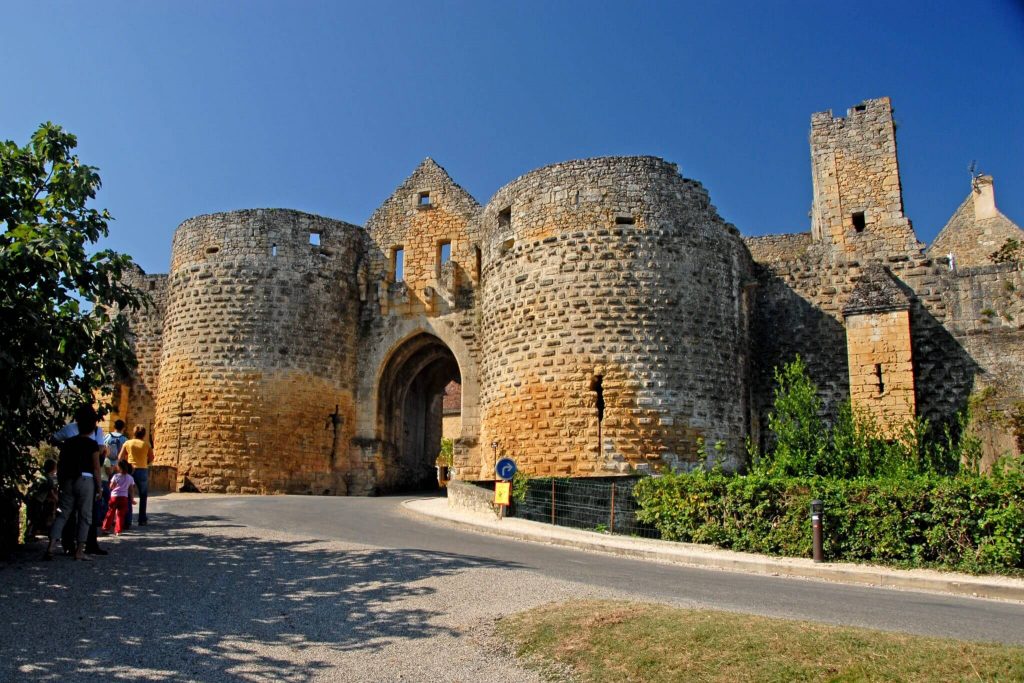
Rick asks Glover if one of the most frequently-carved motifs- a large cross with smaller crosses on each end- is exclusively a Templar cross, to which Glover replies that the symbol in question was one adopted by a number of Crusading Orders including the Knights Templar.
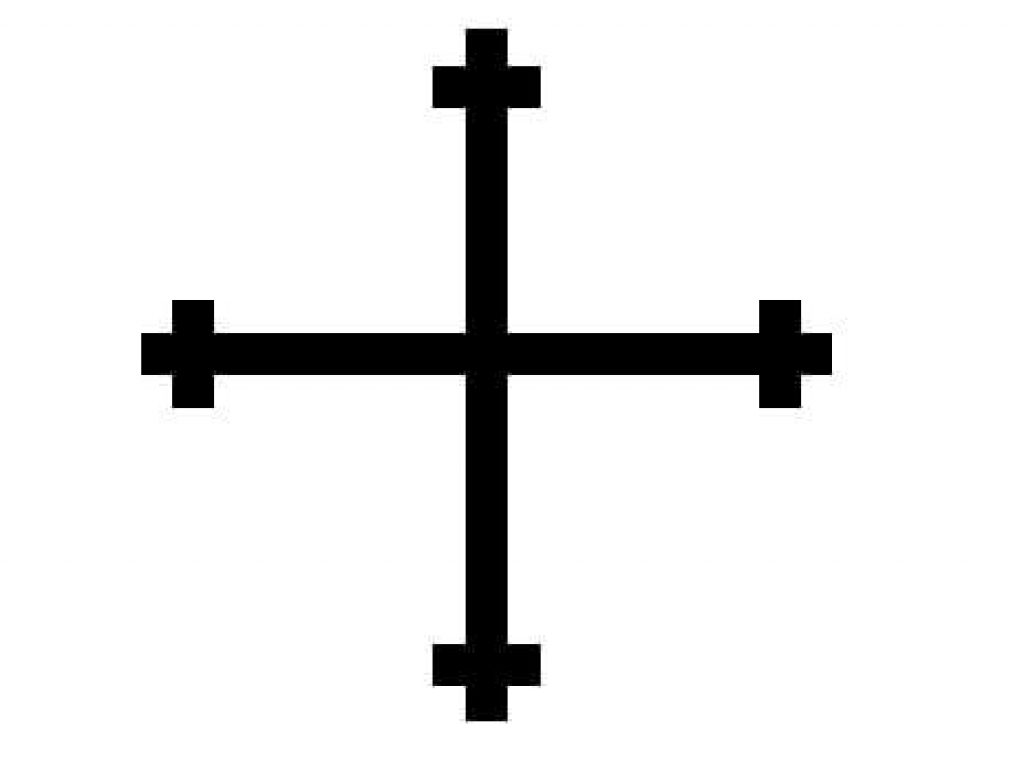
Glover then points out a strange symbol, dubbed the “Grail,” which he interprets as a chalice topped by an octagon bisected by a vertical line and containing three vertically-stacked V’s. The three treasure hunters observe that the three V’s inside the octagon atop the chalice evoke the three red chevrons that adorn the La Rochefoucauld coat of arms.
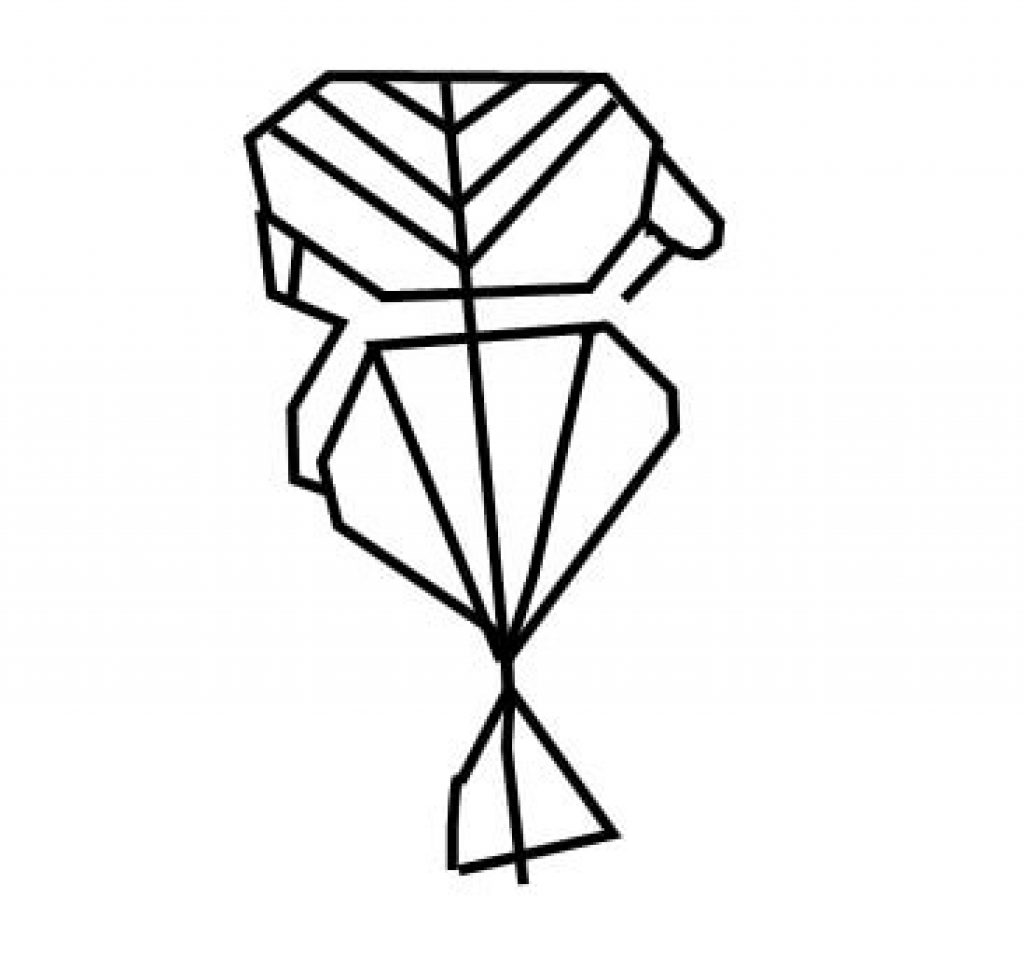
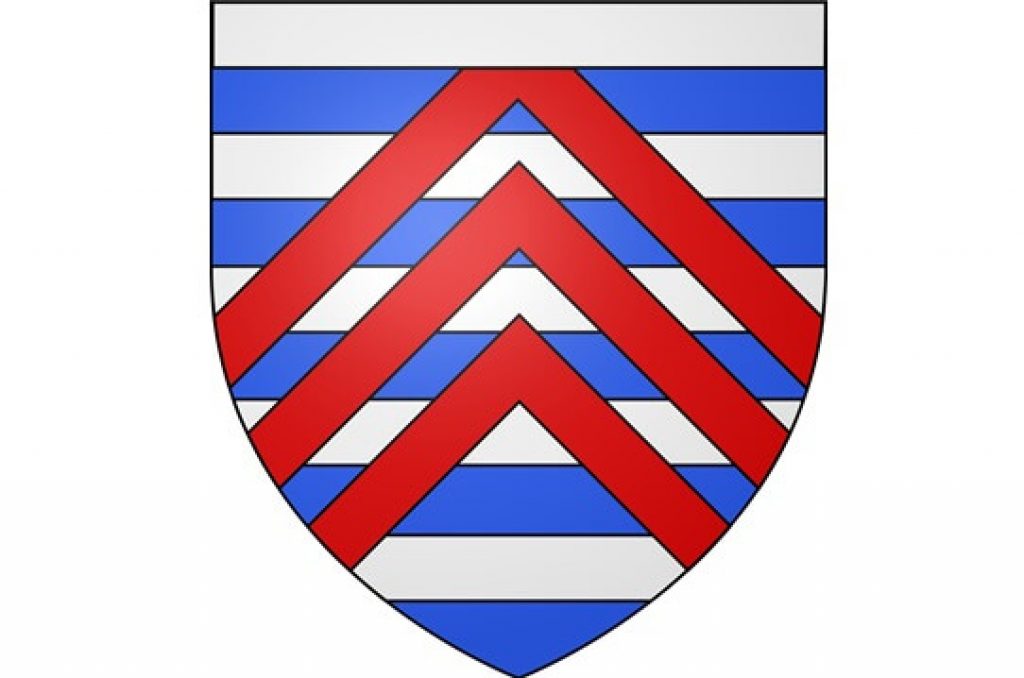
Next, Glover points out what he calls the “special Domme Cross,” a strange fractalized cross which he claims is unique to the prison. “It’s so unusual,” Glover says of the symbol, “that you have to think of what other sources of inspiration there could have been for this. And I think it’s possible, given [the Knights Templar’s] contacts in the Holy Land, that this might have been inspired by the Kabbalistic Tree of Life,” which features prominently in Petter Amunden’s theory.
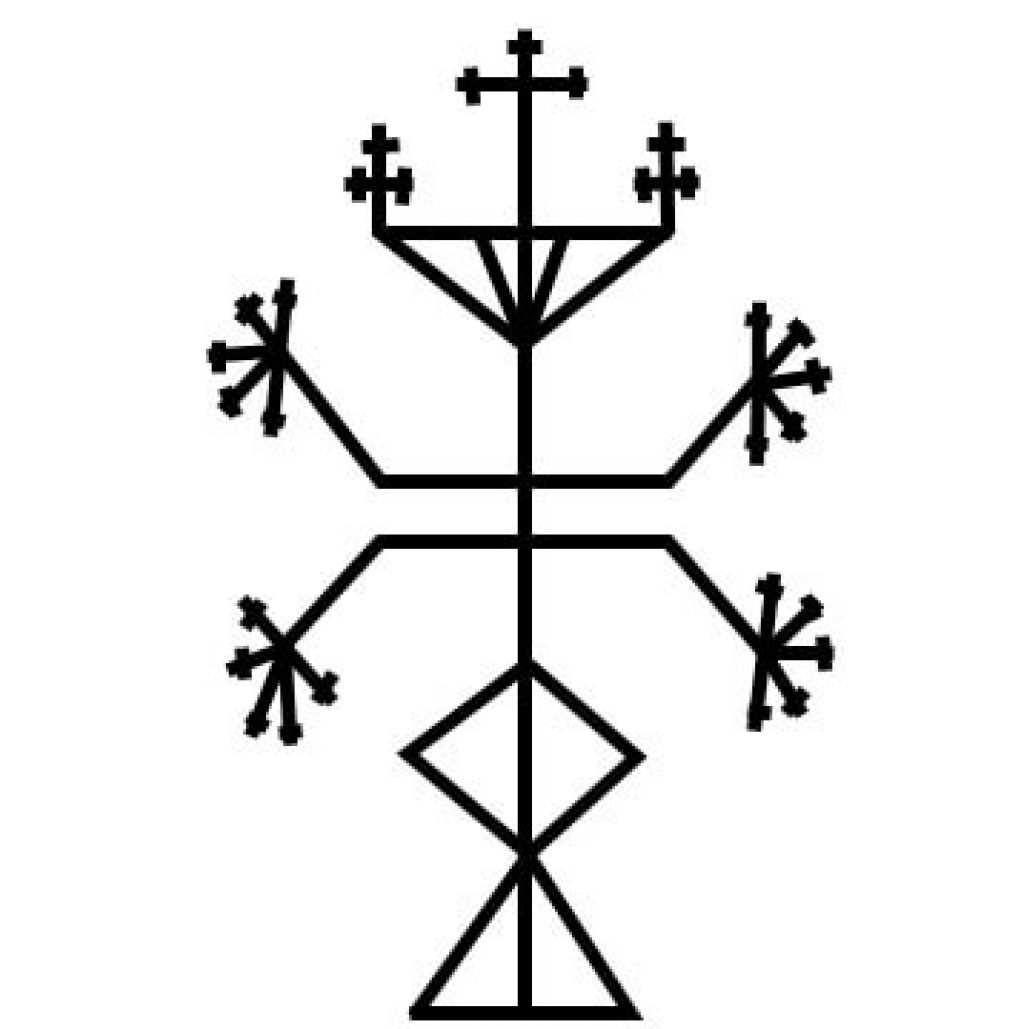
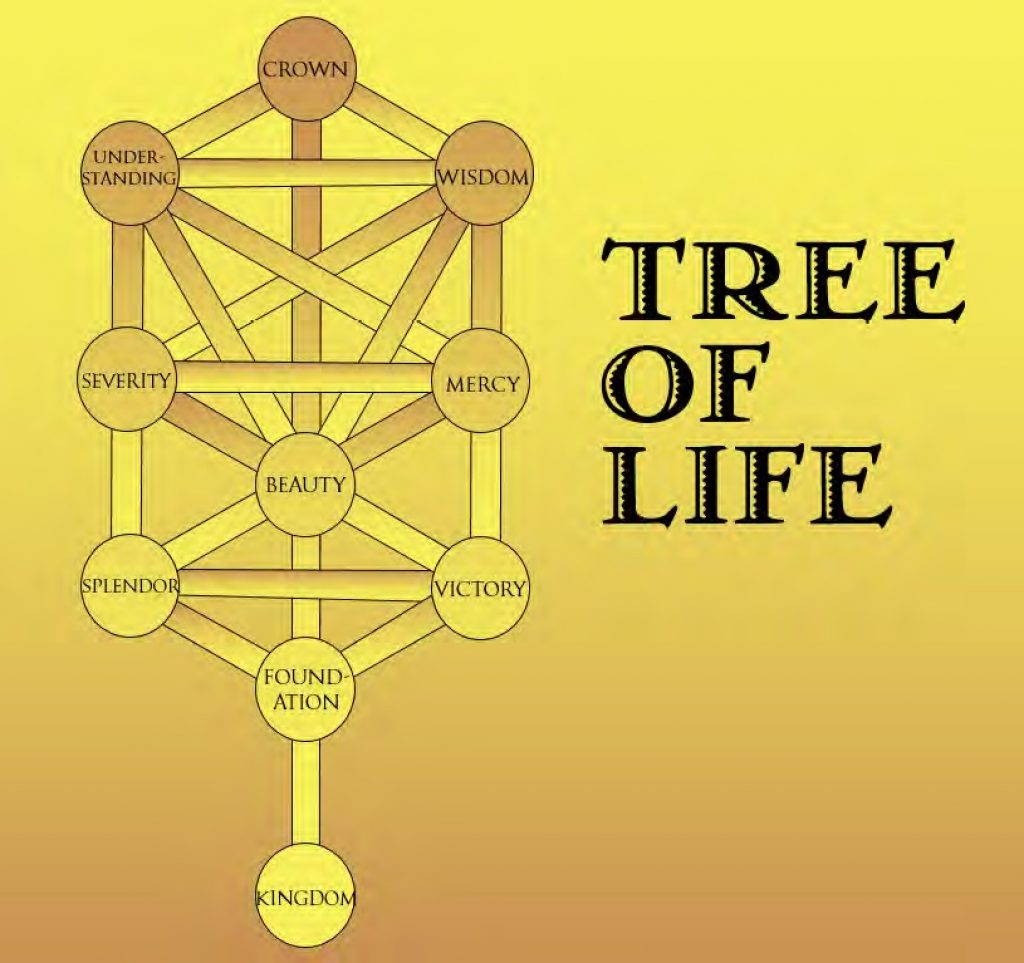
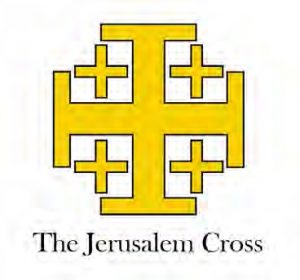 Next, Glover shows the treasure hunters a carving of another large cross with a small cross on each of the three top ends. Like many of the other crosses carved onto the walls, the bottom branch of this cross is set into a triangle. This cross is different from the others, however, in that each of the small crosses at the end of its three top arms have four dots in each quadrant, strongly evoking the middle symbol carved on the H/O stone, believed by many to be a Jerusalem Cross. At the end of the top three arms of the main cross is a fifth dot, similar to the cross pattee carved on the Overton Stone near Overton, Nova Scotia.
Next, Glover shows the treasure hunters a carving of another large cross with a small cross on each of the three top ends. Like many of the other crosses carved onto the walls, the bottom branch of this cross is set into a triangle. This cross is different from the others, however, in that each of the small crosses at the end of its three top arms have four dots in each quadrant, strongly evoking the middle symbol carved on the H/O stone, believed by many to be a Jerusalem Cross. At the end of the top three arms of the main cross is a fifth dot, similar to the cross pattee carved on the Overton Stone near Overton, Nova Scotia.
At the conclusion of their tour of the Templar prison, the three treasure hunters express their astonishment at the number of potential ties between the Templar graffiti and various carvings found on or near Oak Island. With that, they thank Glover for his help, leave the fortress, and ostensibly return to Oak Island.
Sometime later, the Oak Island crew meets in the War Room, where Rick Lagina, Alex Lagina, and Peter Fornetti detail the discoveries they made in France. Marty Lagina remarks that the alleged Tree of Life carved on the walls of the Domme prison is stylistically different from the Tree of Life which some believe Nolan’s Cross represents. Rick suggests that this dissimilarity might be due to the Domme carving’s being an early depiction of the symbol, and expresses his belief that the Oak Island swamp, in accordance with Petter Amundsen’s ‘Tree of Life’ theory, might hold the key to the Oak Island mystery.
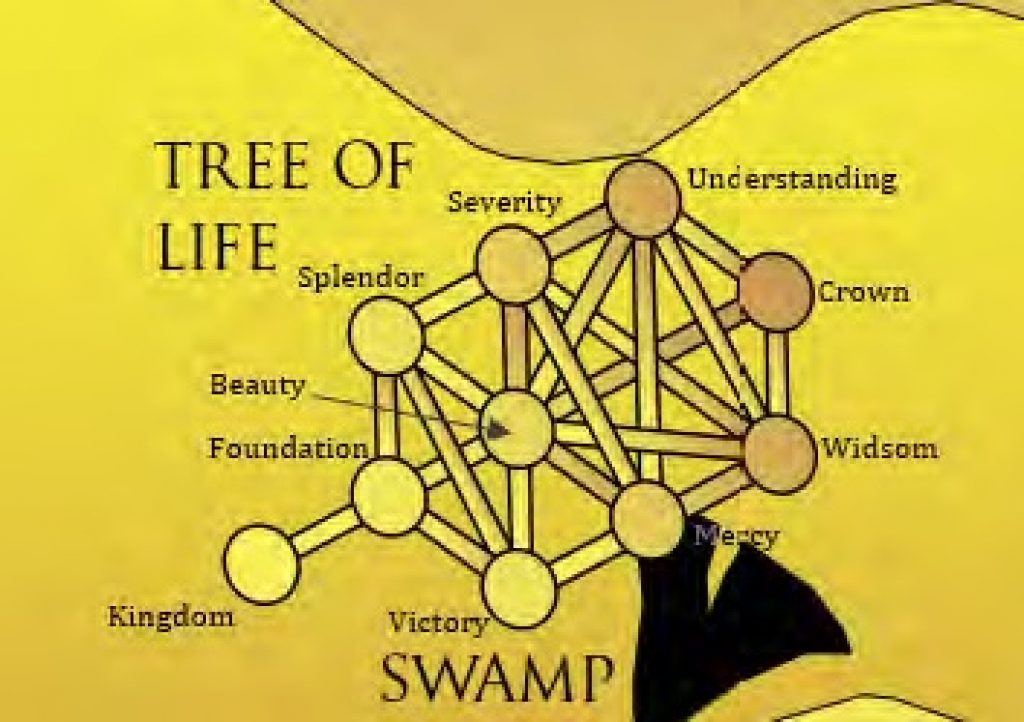
Analysis
The Knight with the Shield
During the train ride to Charente, French researcher and translator Nichola Lewis shows Rick Lagina, Alex Lagina, and Peter Fornetti a photo of an illustration of a Templar knight riding into battle, which she claimed adorns one of the walls of two “Templar chapels” located in Charente. On the knight’s shield is a cross with four dots in each quadrant, a symbol reminiscent of one of the carvings on the H/O stone.

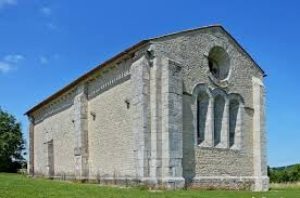
This particular image, painted around 1175 A.D., is part of a fresco (restored in 2013) which adorns the North Wall of the Chapelle des Templiers, a Knights Templar chapel located in the Charente countryside near the town of Cressac-Saint-Genis and the last remains of a Templar Commandery. The entire fresco depicts a battle fought during the First Crusade, the most likely candidates for this conflict being the Battle of Antioch (fought in 1098 A.D.), which is associated with the discovery of the Holy Lance (the spear used to pierce the side of the Jesus on the Cross; one of the Knights Templar’s alleged treasures) and the Battle of al-Buqaia (fought in 1163 A.D.), in which Hugh VIII de Lusignan, the father of Guy de Lusignan (a Crusader king associated with the La Rochefoucauld family), led an army of French pilgrims. The knight in question, shown charging into battle on horseback with a couched lance, appears to be a Frankish commander. Some believe that he is Saint George, a 3rd Century tribune in the Praetorian Guard (an elite unit of the Imperial Roman Army) and Greek Christian martyr whom legend says posthumously intervened at the Battle of Antioch, while others maintain that he is a Templar knight.
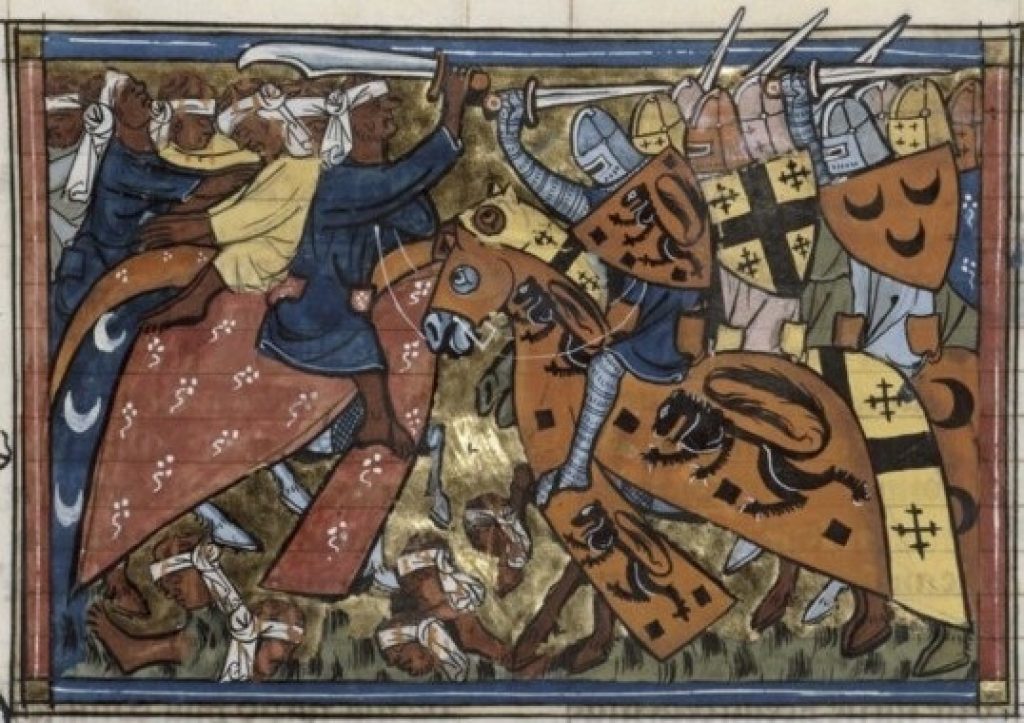
Christogram
En route to Charente, Nichola Lewis presents her theory that the ‘H’ and ‘O’ symbols carved on the H/O stone represent the Greek letters theta and eta, respectively, and that that, together, three symbols inscribed on the stone form a Christogram, or an abbreviation for the name of Jesus Christ. Specifically, she believes the symbols are an abbreviation for Theos, the Greek word for God.
One of the oldest Christograms is the Chi-Rho, which consists of the Greek letter ‘X’ superimposed on the Greek letter ‘P’, a conflation the first two letters of the Greek word Christos, or Christ. According to Roman historians Eusebius and Lactantius, Constantine the Great, the first Roman emperor to convert to Christianity, used the Chi-Rho as his battle standard after seeing a vision of it in the sky, accompanied by the Greek words, “En touto nika,” or “In this sign conquer.”
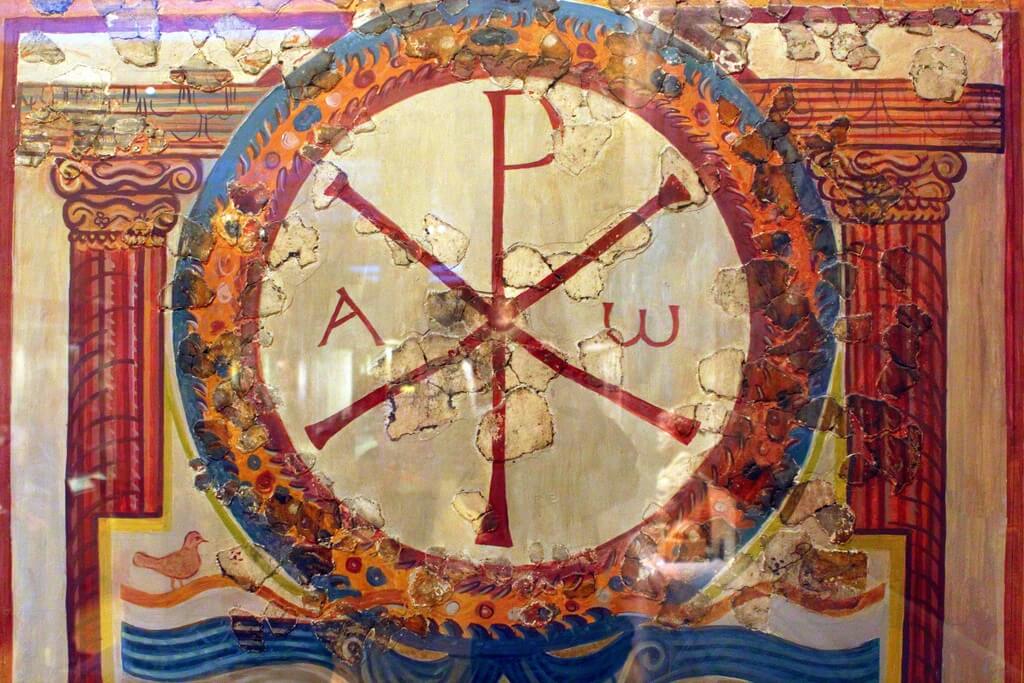
Other common Christograms include ‘IHS’, the Latinized version of the first three letters of the Greek name ‘Iesous’ (‘Jesus’); and ‘INRI’, a acronym of the Latin phrase: ‘Iesvs Nazarenvs, Rex Ivdaeorvm’ ( ‘Jesus of Nazareth, King of the Jews’).
Origin of the Surname La Rochefoucauld
In this episode of The Curse of Oak Island, Sonia Matossian claims that the family name La Rochefoucauld derives from the rock upon which the Chateau de La Rochefoucauld was built, also known as ‘la Roche a Foucauld,” or ‘Foucauld’s Rock.’
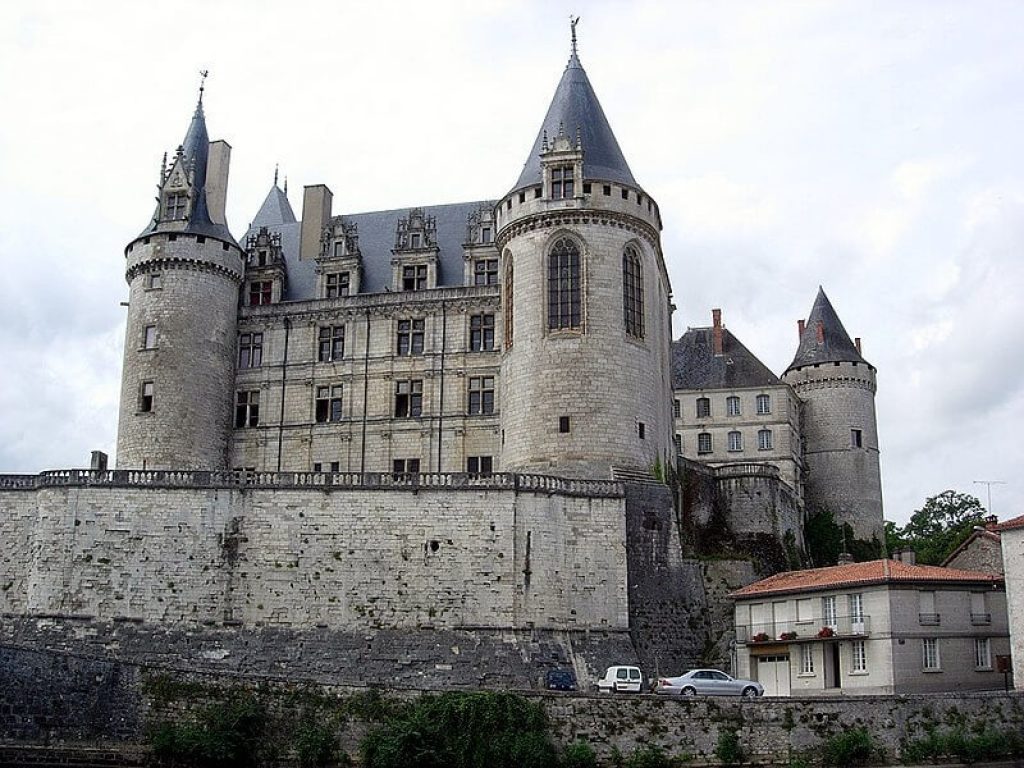
History shows that Foucauld’s Rock owes its name to a man named Fucaldus, the younger brother of an local Early Medieval Frankish feudal lord. In 980 A.D., Fucaldus established a fortified camp on the rock, thereafter known as Fucaldus in Rupe (which is Latin for ‘Fucaldus’ Rock’). Perhaps because of this, Fucaldus bore the surname ‘de La Roche’, or ‘of The Rock’ (not to be confused with the younger northeastern French noble family De la Roche). However, according to at least one source, Fucaldus bore the surname ‘de La Roche’ on account of his father’s lordship over a small town in the county of Angounois called ‘La Roche,’ and not on account of the rock upon which he built his camp. Whatever the case, Fucaldus de La Roche’s children decided to adopt a surname which merged a Gallicized version their father’s Christian name- Foucauld- with his family name- de La Roche. In this way, the House of La Rochefoucauld was born.
Old French
In this episode, Sonia Matossian suggests that the labels and messages on Zena Halpern’s map of Oak Island were written in a dialect of Old French, an umbrella term for a variety of dialects spoken in what is now France from the 8th Century to the 14th Century A.D.
The various dialects of Old French are linguistic descendants of Vulgar Latin, the language spoken throughout the Roman Empire (which existed from roughly 27 B.C.-395 A.D., encompassing, at its height, a vast area surrounding the Mediterranean Sea, from what is now northern Morocco, to the British Isles, to the Crimean Peninsula, to southern Egypt). In what is now France, Vulgar Latin was influenced by Gaulish, the language spoken by local Celts who lived there under Roman rule.
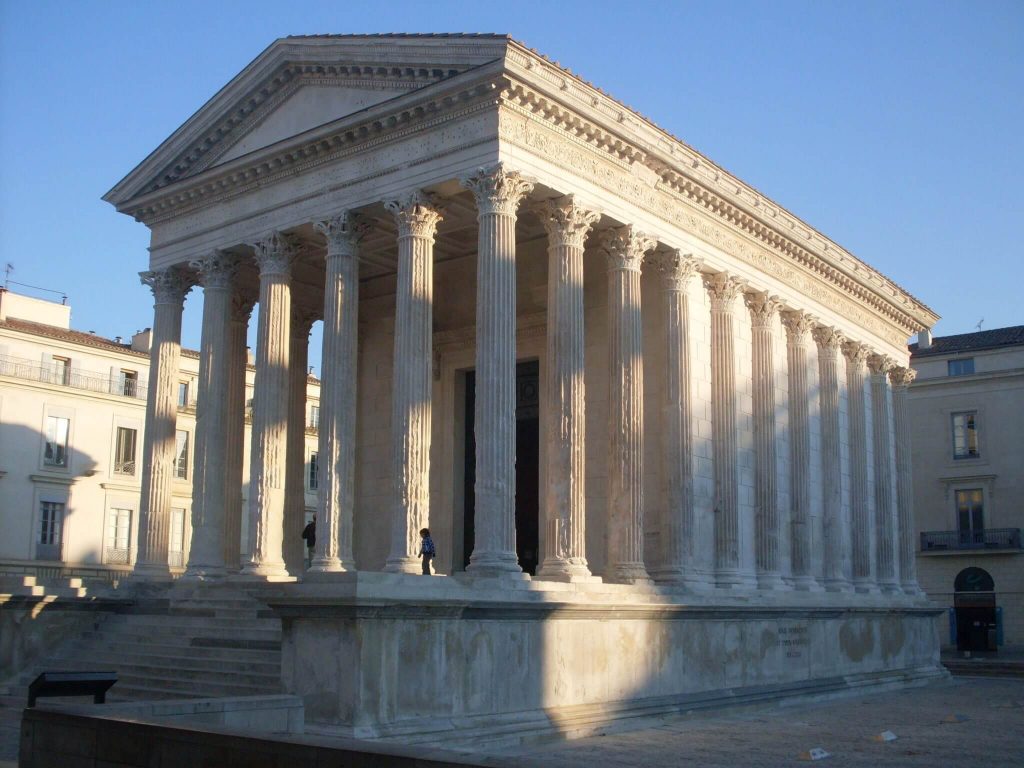
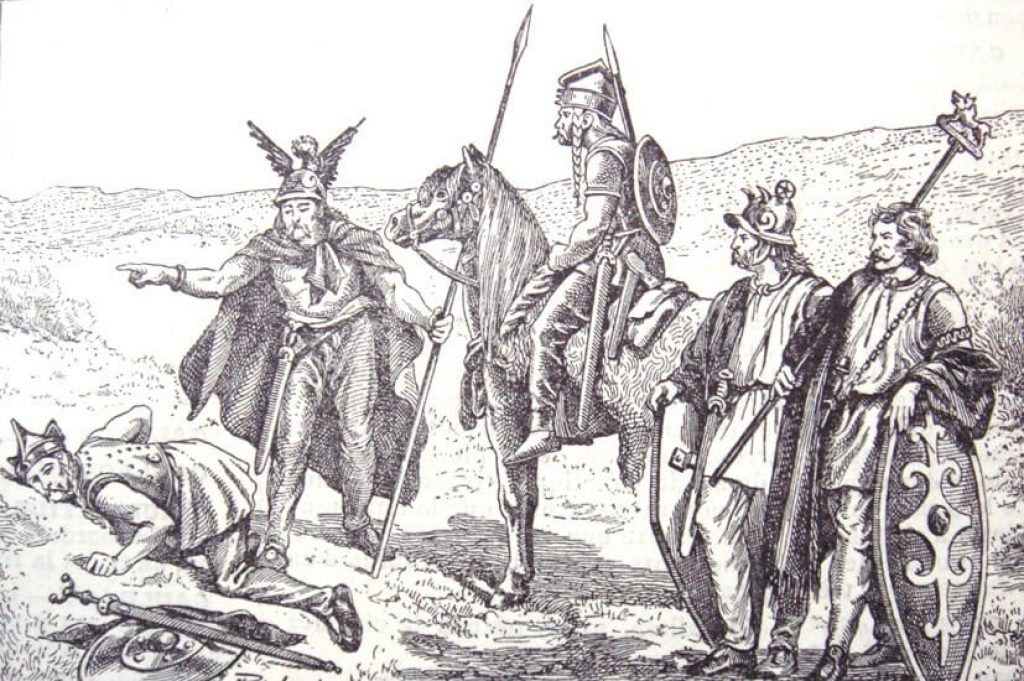
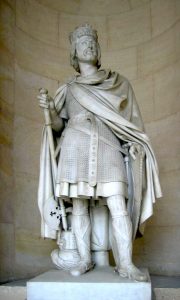
Following the 5th Century Fall of the western half of the Roman Empire and the subsequent Migration Period, during which various Germanic and Central Asian tribes migrated into Western Europe, Gaulish-influenced Vulgar Latin was further influenced by Old Frankish, the language spoken by the Franks (Germanic newcomers who settled in what is now France, Holland, Belgium, and Western Germany). By the 8th Century A.D., this linguistic amalgam had fractured into a variety of dialects known collectively as Old French which, in time, split into two main branches: the langues d’oil, spoken in Northern France, and the Occitan dialects, or the lenga d’oc, spoken in Southern France (‘oil’ and ‘oc’ being the words for ‘yes’ in the langues d’oil and lenga d’oc, respectively (incidentally, Languedoc, a region of Southern France associated with a number of Oak Island theories, gets its name from the langa d’oc)).
In the 1300’s, one particular langue d’oil spoken in Ile-de-France, an area surrounding the city of Paris, evolved into what is known today as Middle French. In 1539, this dialect became the official language of the Kingdom of France. Middle French evolved into Classical French, spoken throughout the 1600’s and 1700’s, which, in turn, developed into Modern French, the language spoken in France today.
Templar Graffiti
In this episode, Rick Lagina, Alex Lagina, and Peter Fornetti examine graffiti carved by members of the Knights Templar onto the walls of the fortress of Domme, France, where they were imprisoned following the suppression of their Order in 1307. These carvings include a detailed crucifix flanked by two onlookers, several other crucifixes, all
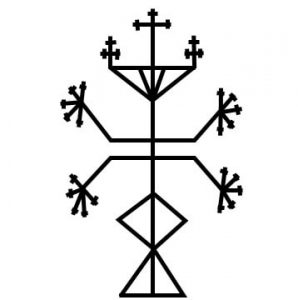
manner of stylized crosses, a number of depictions of the Madonna and Child, and other mysterious symbols.
Arguably, the most mysterious of the carvings is a seven-armed symbol which Jerry Glover, the Templar expert who serves as the Laginas’ guide
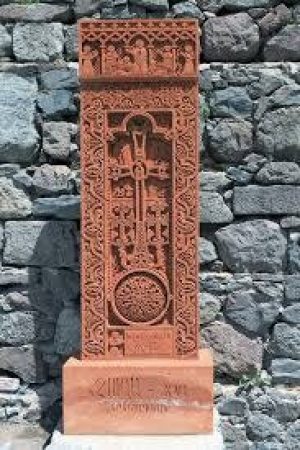
in the prison at Domme, calls the “special Domme Cross.” In an article on Glover’s website, first published in the magazine Fortean Times, the author remarks that the symbol is somewhat reminiscent of the Menorah, the seven-armed lampstand of pure gold crafted during the Exodus which was once housed Solomon’s Temple in Jerusalem (an ancient symbol of Judaism which some believe lies beneath Oak Island, having been interred by the Knights Templar or one of its derivatives). The author also suggests the carving’s resemblance to the Kabbalistic Tree of Life, an observation made in this episode. Finally, the author presents his own theory that the symbol bears strong a resemblance to elaborately-stylized crosses carved on khachkars– Medieval Christian Armenian memorial stones crafted most frequently during the Crusades- and opines that the Domme cross was inspired by a particular khachkar at Geghard, an Armenian monastery incidentally associated the aforementioned Holy Lance.
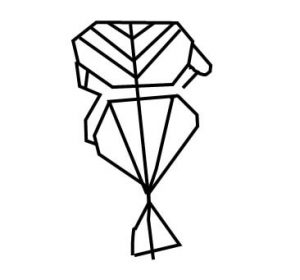
Another strange carving at Domme is an alleged depiction of the Holy Grail, which the author of the article on Glover’s website calls the ‘Graal de Domme’. The author suggests that the octagonal emblem atop the triangle in which three ‘V’s are encapsulated is what he calls the “Lapis Exilis“, or “the stone that fell from Heaven” (presumably, the author is referring to the heavenly jewel which, according to medieval German myth, fell from the rebellious angel Lucifer’s crown when he was cast out of Heaven). He further suggests that the three ‘V’s inside the octagonal symbol represent the wings of a phoenix, a mythological bird also associated with the mth of the Lapis Exilis.
The author goes on to comment on another piece of graffiti, not shown in this episode, which he claims depicts Pope Clement V (who, in 1307, at the behest of King Philip IV of France, issued a Papal Bull instructing European Christian monarchs to arrest members of the Knights Templar and seize their assets) “as a serpent being speared by the Archangel Michael… clearly an angry satirical swipe at the man who betrayed the Templars, equating the pope with Satan.”
Others interesting Domme carvings mentioned by the author include “a pentagram and several suns and crescents above the scene of a Eucharist… life-size hands, a Nine-Men’s-Morris gameboard [an ancient strategy boardgame somewhat similar to checkers]… angels… a St. Christopher, [and] text in medieval French.”
Interestingly, the carvings that adorn the wall of the prison at Domme are not necessarily the only examples of post-suppression Templar prison graffiti. Other alleged Templar carvings can be found on the walls of the dungeons of England’s Warwick Castle and Royston Cave, and France’s Chateau de Chinon and Chateau de Gisors. Some of the most interesting of these carvings, in the context of Oak Island, are found at the Chateau de Gisors, where several high-ranking Templar knights, including the Order’s last Grand Master, Jacques de Molay, were imprisoned. One of the carvings at Gisors depicts a covered wagon evocative of the legend of the Templar treasure, allegedly smuggled out of France immediately prior to the Templar suppression, while three more carvings depict figures with strange headdresses which some have interpreted as North American Indians.
Want to Help?
If you enjoyed this article and would like to help support this website, please check out our online bookstore:







Ignacio Arechariovski
H + O stone, Hierosolym/Hirosolymitanis, + K.T., O Ordem, order of Christ.
Line
Commentaire: Histoire fascinante, guidé par les frères Lagina.
Ils sont maintenant les gardiens des trésors de cette Île qui leur était prédestinée (nouveau monde).
Merci à vous!
Line
raymond haworth
Love Oak island the brothers are Gentleman with all their friends.
lovely brothers and a gate program HOPE they find gold on the island.
All the best from the UK take care on the island.
Ray
john bentley
Re my comment on La Rochefocault and the Oak Island connection I should have mentioned that my book -The Royal Secret – tells of how the treasure got from Rochefocault to Scotland and thence to Oak Island. see: http://www.theroyalsecret.info
john bentley
This all makes sense. The castle of La Rochefocault is not an hour away from the port of La Rochelle from which it has been claimed from several sources a Templar fleet of eighteen boats loaded with Templar treasures sailed to Scotland after the capture of their leader Simon de Molay and many other high ranking Templars in 1307. In Scotland they sought the protection of Robert the Bruce , the King of Scotland and also a Templar. At Roslyn near Edinburgh the St Clair family (also Templars) had a large chapel in which many of the signs such as the tree of life were carved in its walls. It is said the Templar treasure was buried there in its vaults until after some 15 years or so it was taken by boat to Nova Scotia (New Scotland) on a secret Viking sea route known to the St Clairs.